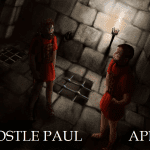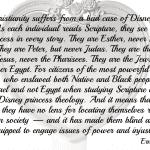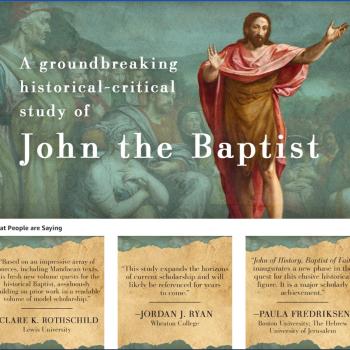Above is the short version of a longer paper I wrote for the Enoch Seminar being held soon on the theme “Concepts of Evil in Second Temple Judaism and Christian Origins.” My paper proposes what I believe is a genuinely new theory regarding the origin of Gnosticism, informed in particular by my work on Mandaean sources but also the extensive work others have done on the texts from Nag Hammadi. The thesis, in a nutshell, is that there is a direct connection between pre-exilic Israelite beliefs that persisted into later times and Gnosticism. Gnosticism’s focus on the creator depicted in the Jewish scriptures and yet negative view of that figure and scripture can both be explained, and can best be explained, as emerging among Israelites who rejected the imposition of Torah and monotheism. Listen to the presentation for details and please do let me know what you think.
We have been given 10-15 minutes for our presentations, and thus I trimmed a fuller version to bring it down to less than 15. You can watch and listen in less than 10 if you increase the playback speed! I recorded it in advance primarily so that, in the case of wifi or other internet issues, it can still be part of the conference. This is my first time fleshing out this proposal in this kind of detail and I am eager to get feedback on it.
I won’t publish the entire text of the paper here. However, having some information in print to go along with the presentation may be useful. First, here are some passages from Nag Hammadi texts that I make reference to, conveniently brought together on p.29 of Elaine Pagels’ The Gnostic Gospels and so I reproduce the entire section from there:
According to the Hypostasis of the Archons, the creator’s vain claim to hold an exclusive monopoly on divine power shows that he
is blind … [because of his] power and his ignorance [and his] arrogance he said …, “It is I who am God; there is none [other apart from me].” When he said this, he sinned against [the Entirety]. And a voice came forth from above the realm of absolute power, saying, “You are mistaken, Samael,” which means, “god of the blind.”
Another text discovered in the same codex at Nag Hammadi, On the Origin of the World, tells a variant of the same story:
… he boasted continually, saying to (the angels) … “I am God, and no other one exists except me.” But when he said these things, he sinned against all of the immortal ones … when Faith saw the impiety of the chief ruler, she was angry.… she said, “You err, Samael (i.e., “blind god”). An enlightened, immortal humanity [anthropos] exists before you!”
A third text bound into the same volume, the Secret Book of John, relates how
in his madness … he said, “I am God, and there is no other God beside me,” for he is ignorant of … the place from which he had come.… And when he saw the creation which surrounds him and the multitudes of angels around him which had come forth from him, he said to them, “I am a jealous God, and there is no other God beside me.” But by announcing this he indicated to the angels that another God does exist; for if there were no other one, of whom would he be jealous?
Here is a list of the figures from the Mandaean lightworld that I talk about in the paper:
- Yoshamen (sometimes spelled Yushamin), derived from Yah(u) Shamayim, “Yah of Heaven,” related to/ analogous with Ba’al Shamen.
- Yukabar (“Yah is Great”, cp. Ba’al-kabar)
- Yusmir (smir denotes “kept, safeguarded” in Mandaic, Hebrew)
- Yuzataq (from “Yah is just?”) is an epithet for Manda d-Heyya (“Knowledge of Life”)
- Yurba (“Yah the Great”) is also called Adonai, identified with the Sun (Shamish)
- Ruha d-Qudsha (“Holy Spirit”), identified with Libat/Venus, also called ‘stira, i.e. Ishtar/Astarte
- Abatur has a secret name Turel or Tauriel (perhaps from “Bull-El”)
- Ptahil (Ptah+El, aka Gabriel)
- Anath-Haijē (Anat, as in Anat-Yahu known from the Elephantine Papyri).
Sometimes a picture is worth a thousand words. In this image from Google Maps, I selected the historic location of the Mandaeans in Mesopotamia, the locations of Elephantine, Nag Hammadi, and Alexandria in Egypt, and a few others that either are major locations in which the Jewish Diaspora could be found in ancient times, or where key Gnostic teachers and texts were from or flourished. The correspondence is striking.














